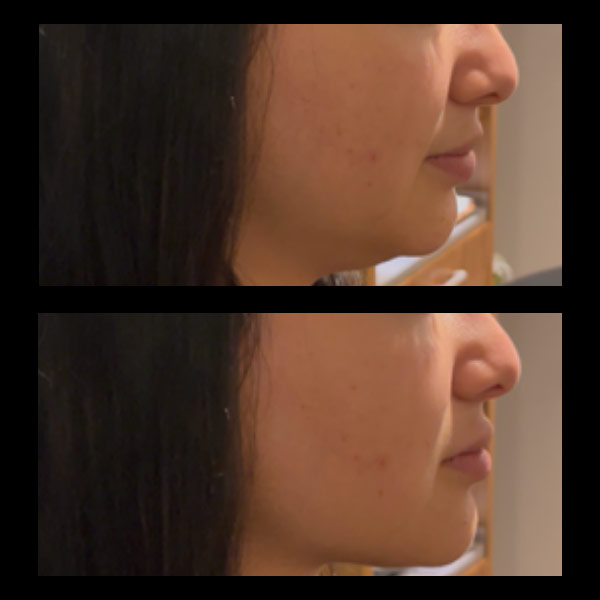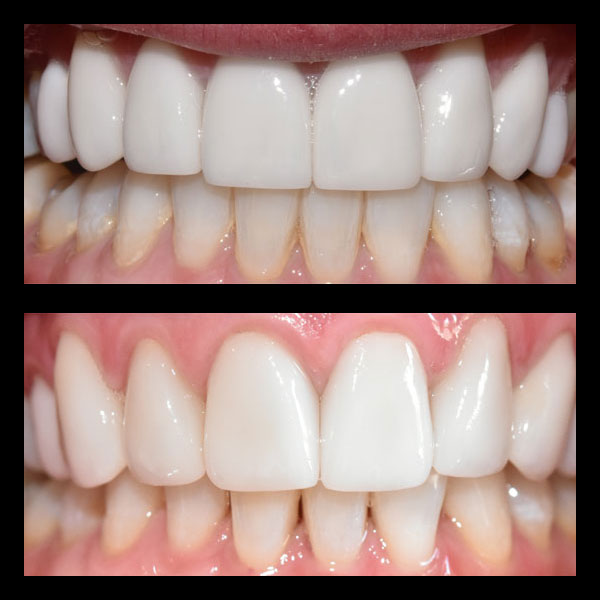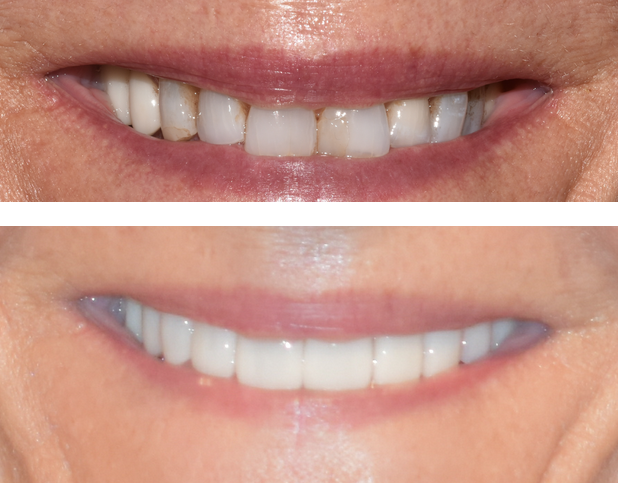Hey everyone, let’s talk smiles. Not just any smile, but that confident, radiant smile we all strive for. You know the one – it lights up a room, makes connections easier, and just plain feels good. But sometimes, life happens. A chipped tooth from a rogue popcorn kernel (don’t pretend it hasn’t almost happened to you!), discoloration that whitening just won’t touch, or maybe a gap left behind by a tooth that couldn’t be saved. These little imperfections can make us feel self-conscious, maybe even hiding our smiles instead of sharing them. It’s April 2025, and honestly, hiding your smile shouldn’t be on your agenda.
For years, I’ve been immersed in the world where health meets aesthetics, particularly in dentistry. And I can tell you, the advancements, even in just the last decade, are staggering. If you’re thinking about restoring your smile, worrying about clunky, obvious dental work… well, you can mostly toss those worries out the window. Today, we’re diving deep into two workhorses of restorative and cosmetic dentistry: custom crowns and bridges. These aren’t just functional fixes; they are meticulously crafted pieces of art designed to seamlessly blend with your natural smile, boosting both its look and its health.
Understanding Custom Crowns & Bridges
So, what exactly are we talking about here? Let’s break it down. Think of a dental crown like a custom-fitted cap or helmet for your tooth. It covers the entire visible portion of a tooth that sits above the gum line. Why would you need one? Lots of reasons! Maybe a tooth has a massive filling and needs extra support, maybe it’s cracked or weakened, severely worn down, or maybe it just looks… well, not great, due to shape or deep discoloration. A crown restores the tooth’s shape, size, strength, *and* improves its appearance. It’s a true multitasker.
A dental bridge, on the other hand, does exactly what its name suggests: it bridges a gap created by one or more missing teeth. It typically involves creating a crown for the tooth on either side of the gap (these are called abutment teeth) and placing a false tooth or teeth (called pontics) in between. These pontics are usually attached to the crowns. Essentially, the bridge uses the neighboring teeth as anchors to hold the replacement tooth firmly in place.
Now, the key word here is custom. Gone are the days of cookie-cutter solutions. Modern crowns and bridges are tailor-made for *you*. This process involves more than just taking a quick measurement. It involves understanding the unique landscape of your mouth – the bite, the way your teeth meet (what dentists call occlusion), the shade and even the subtle translucency of your natural teeth. The goal? To create a restoration that doesn’t just fill a space or cover a flaw, but looks, feels, and functions just like your natural teeth. When done right, nobody should be able to tell you’ve had work done. It’s about restoring harmony and balance to your smile.
This is where a holistic approach becomes so vital. It’s not just about the technical skill of placing a crown or bridge; it’s about the artistic vision to ensure it blends seamlessly, supports facial structures correctly, and works in concert with your entire jaw system. It’s dentistry meets artistry, considering the whole picture – your facial aesthetics, your bite mechanics, and your long-term oral health. Achieving that truly natural appearance requires a deep understanding of dental materials, light reflection, and individual anatomy. It’s a craft refined by experience.
Innovative Techniques and Technology in Custom Restorations
Okay, let’s geek out for a minute, because the tech involved in creating these custom restorations today is pretty incredible. If your last impression involved biting into a tray of goopy stuff that made you gag… I feel you. But thankfully, things have moved lightyears beyond that (in many forward-thinking practices, anyway!).
One of the game-changers is digital scanning. Instead of those messy traditional impressions, dentists can use a small, wand-like intraoral scanner to capture thousands of images of your teeth and gums in minutes. These images stitch together to create a highly accurate 3D digital model of your mouth on a computer screen. It’s faster, way more comfortable for you, and often more precise than the old methods. This precision is critical for getting that perfect fit for your crown or bridge.
Then there’s 3D cone beam imaging (CBCT). This isn’t your standard dental X-ray. It provides incredibly detailed, three-dimensional views of your teeth, jawbone, soft tissues, and nerve pathways, all in a single scan. Why is this important for crowns and bridges? For bridges, especially those supported by implants, CBCT allows for meticulous planning of implant placement, ensuring safety and optimal positioning. For complex crown cases, it helps visualize the tooth structure and roots in detail, leading to better treatment planning and outcomes.
And we can’t forget CAD/CAM (Computer-Aided Design/Computer-Aided Manufacturing) technology. That digital scan we talked about? It can be used to design your restoration virtually on a computer (the CAD part). Then, this design is often sent to an in-office milling machine or a specialized dental lab where your crown or bridge is precisely fabricated from a block of high-quality ceramic or other advanced dental material (the CAM part). This workflow dramatically increases efficiency and precision. Sometimes, it even means getting your final crown in a single visit! That’s a far cry from multiple appointments spread over weeks.
Laser technology also plays a role, sometimes used for gum contouring around the restoration for a more aesthetic final result, or even for preparing the tooth surface in certain situations. These technologies aren’t just fancy gadgets; they directly contribute to:
- Better Fit: Digital precision minimizes tiny gaps where bacteria could hide.
- Enhanced Aesthetics: Allows for meticulous shade matching and crafting of natural-looking shapes and contours.
- Increased Durability: Precise fit and modern materials lead to restorations that can last for many, many years with proper care.
- Improved Comfort: Both during the impression process and with the final fit.
- Efficiency: Often reducing the number of appointments needed.
The integration of these tools allows dentists to achieve a level of customization and quality that was simply unimaginable not that long ago. It’s all about leveraging innovation to improve both the function *and* the visual appeal of your smile.
The Incredible Smiles Approach: Personalized Care and Advanced Expertise
Speaking of practices that embrace both technology and artistry, let’s talk about a gem right here in Boulder, Colorado – Incredible Smiles. With over 30 years serving the community, they’ve built a reputation for exactly the kind of high-touch, high-tech dentistry we’ve been discussing.
This isn’t just another dental office. They truly embody that holistic philosophy. Led by highly skilled dentists like Dr. Priya Uppal and Dr. Lori Kemmet, the team focuses on what they call physiologic (or neuromuscular) dentistry. That means they look beyond just the teeth and consider the entire system – jaw joints (TMJ), muscles, and how your bite affects overall comfort and function. This is *crucial* when designing restorations like crowns and bridges, ensuring they not only look good but also contribute to a balanced, comfortable bite.
They seamlessly integrate those advanced technologies we mentioned – 3D cone beam imaging, digital scanning, lasers – into their workflow. This allows them to plan and execute treatments like custom crowns, bridges, and even dental implants with remarkable precision. But technology alone isn’t enough. It’s their combination of this tech with a genuine artistic touch and deep expertise in cosmetic and restorative techniques that makes the difference. They understand the nuances of smile design, ensuring your restorations look completely natural and harmonize beautifully with your facial features.
And let’s be honest, the environment matters too. Nobody *loves* going to the dentist, right? Incredible Smiles gets that. They’ve cultivated a warm, spa-like atmosphere designed to make you feel relaxed and comfortable. It’s clear their focus extends to total patient wellness, not just fixing teeth. It’s about personalized care, where you feel heard and understood, and the treatment plan is tailored specifically to your needs and aesthetic goals. Whether you need a single crown, a bridge to replace missing teeth, or even a more comprehensive full mouth reconstruction, their approach ensures meticulous attention to detail at every step.
Maintaining Long-Lasting Smile Aesthetics with Custom Restorations
Okay, so you’ve invested in beautiful, custom-made crowns or bridges. They look fantastic, feel great, and your confidence is soaring. Now what? Well, getting them is just the first step; taking care of them is key to ensuring they last for years, even decades.
Think of it like maintaining a high-performance car; premium restorations need consistent care to perform optimally. Luckily, it’s not complicated and mostly involves reinforcing good oral hygiene habits.
- Brushing Basics (but Better): Brush twice a day for two minutes with fluoride toothpaste and a soft-bristled brush. Pay extra attention to the area where the crown or bridge meets the gum line – plaque loves to hang out there. Gentle, circular motions are best.
- Flossing is Non-Negotiable: Flossing at least once a day is crucial. For bridges, you’ll need to learn how to clean underneath the pontic (the fake tooth). Floss threaders or special bridge floss are designed for this. It might seem fiddly at first, but it’s vital for preventing gum disease and decay in the supporting teeth. For crowns, floss normally, being careful not to “snap” the floss down too hard at the gumline.
- Consider Additional Tools: An interdental brush can be great for cleaning around crowns and the abutment teeth of bridges. Some people find water flossers helpful, especially for reaching under bridges, but they usually supplement rather than replace traditional floss.
- Watch Your Diet: While modern crowns and bridges are strong, they aren’t indestructible. Avoid chewing on super hard things like ice, popcorn kernels, or hard candies, especially directly on the restoration. Be mindful of sticky foods too.
- Don’t Skip Regular Check-ups: This is perhaps the most important tip! Seeing your dentist and hygienist regularly (typically every six months, but follow their specific recommendation for you) is essential. They can professionally clean areas you might miss, check the integrity of your restorations, assess the health of the supporting teeth and gums, and catch any potential issues *before* they become big problems. Practices like Incredible Smiles offer thorough Teeth Cleaning & Periodontal Therapy services designed to maintain not just your natural teeth but your restorations too.
Consistent maintenance doesn’t just protect your investment; it supports your overall dental health and keeps that beautifully restored smile looking its absolute best. A little diligence goes a long way!
Restoring your smile with custom crowns and bridges is a journey toward renewed confidence and optimal oral health. It blends advanced science with careful artistry to create results that are both functional and incredibly natural-looking. Remember that popcorn kernel incident? Or that gap you try to hide? Modern dentistry has sophisticated, aesthetically pleasing solutions.
If you’re in the Boulder, Colorado area and considering enhancing your smile, whether it’s addressing a single damaged tooth or replacing missing ones, finding a practice that prioritizes personalized care, utilizes cutting-edge technology, and boasts a wealth of experience is key. Incredible Smiles exemplifies this approach, focusing on creating beautiful, functional, and long-lasting results in a comfortable setting.
Don’t let dental imperfections hold you back any longer. Why not explore what custom restorations could do for you? Reach out, ask questions, and take that first step towards the smile you deserve. What aspect of custom restorations interests you the most? Let me know in the comments below!
Frequently Asked Questions
What are dental crowns and why are they used?
Dental crowns are custom-fitted caps that cover the entire visible portion of a tooth above the gum line. They are used to restore the shape, size, and strength of a tooth, and to improve its appearance, especially when a tooth is cracked, weakened, or discolored.
How does a dental bridge work?
A dental bridge fills the gap created by one or more missing teeth. It involves creating crowns for the teeth on either side of the gap (called abutment teeth) and placing a false tooth or teeth (pontics) in between, using the neighboring teeth as anchors.
Why is customization important in dental restorations?
Customization ensures that crowns and bridges are tailored to fit your unique dental structure, including the shade, shape, and bite, so that they look and function like natural teeth. This enhances both aesthetic appeal and oral health.
What technologies are used to create custom dental crowns and bridges today?
Modern technologies include digital scanning for precise 3D modeling, 3D cone beam imaging for detailed views of dental structures, and CAD/CAM for designing and fabricating restorations with high precision. These innovations ensure better fit, aesthetics, and durability.
How can I maintain my custom dental restorations?
Maintain your crowns and bridges by brushing twice daily with fluoride toothpaste, flossing (especially under bridges), using interdental brushes if necessary, avoiding hard foods, and attending regular dental check-ups for professional cleaning and assessment.
What are the benefits of digital scanning in dentistry?
Digital scanning provides a comfortable and precise capture of teeth and gums, creating a highly accurate 3D model of your mouth. This is faster and more comfortable than traditional impression methods and contributes to a perfect fit for restorations.








